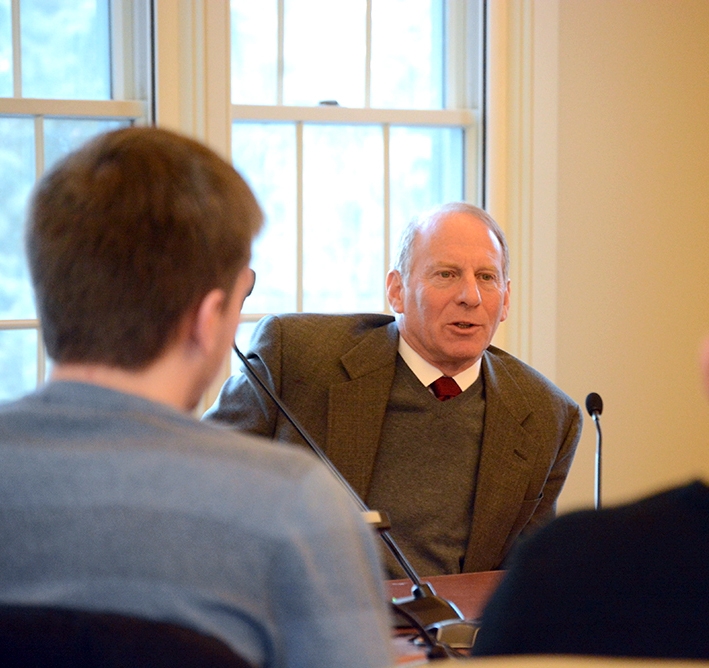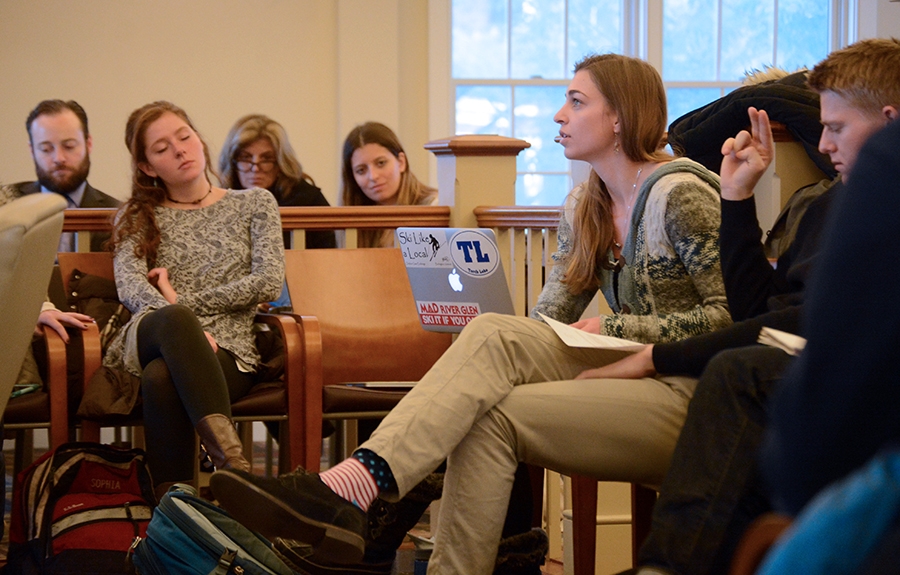J-term Scenes: How Diplomacy Works


MIDDLEBURY, Vt. – Imagine that Russia has just dispatched heavily armed troops to its border with Latvia, a sovereign nation and NATO member on the Baltic Sea. What action should the United States take in such a situation?
The Winter Term students in Professor Allison Stanger’s Crisis Diplomacy course tackled this hypothetical case on January 27 with guest visitor Richard Haass looking on. The president of the Council on Foreign Relations (CFR) and career diplomat was in Middlebury to watch Stanger’s class deploy the CFR’s “model diplomacy simulation suite.” The suite is designed to simulate the complex environment in which diplomats and policymakers must operate.
Members of the class took on the role of president and vice president of the United States, secretary of defense, national security advisor, director of national intelligence, ambassador to the United Nations, etc., to research, role play, and debrief on how to handle a simulated crisis.
Professor Stanger, the Russell Leng ’60 professor of international politics and economics and author of One Nation Under Contract: The Outsourcing of American Power and the Future of Foreign Policy, sets high expectations for students in her class.
Not only would the undergraduates have to negotiate the hypothetical Latvian crisis (which paralleled Russia’s actions in Crimea, including the deployment of masked soldiers in unmarked green uniforms), they would do so with the president of the Council on Foreign Relations – and members of his staff – in the room.
Haass, the former special envoy to Northern Ireland, did offer advice such as, “You always want to achieve your own country’s goals, but you also want to leave the others with an exit map.” In negotiations, Haass added, you have to keep in mind, “What is the other side’s definition of success?”
Three weeks into J-term, Stanger’s undergraduates proved to be adept at using the CFR’s simulation suite, and Haass commended them for their preparation and their insights.
It helped that during the first two weeks of the course the class used CFR’s tools of diplomacy to defuse two other not-so-hypothetical international conflicts: a catastrophic drone strike in Pakistan and a humanitarian crisis in South Sudan.
Required reading for the class is War and Peace, all 1,317 pages of it, to help the students compare lessons from the practice of statecraft with insights gained from Tolstoy’s literary masterpiece.
– With reporting and photography by Robert Keren

